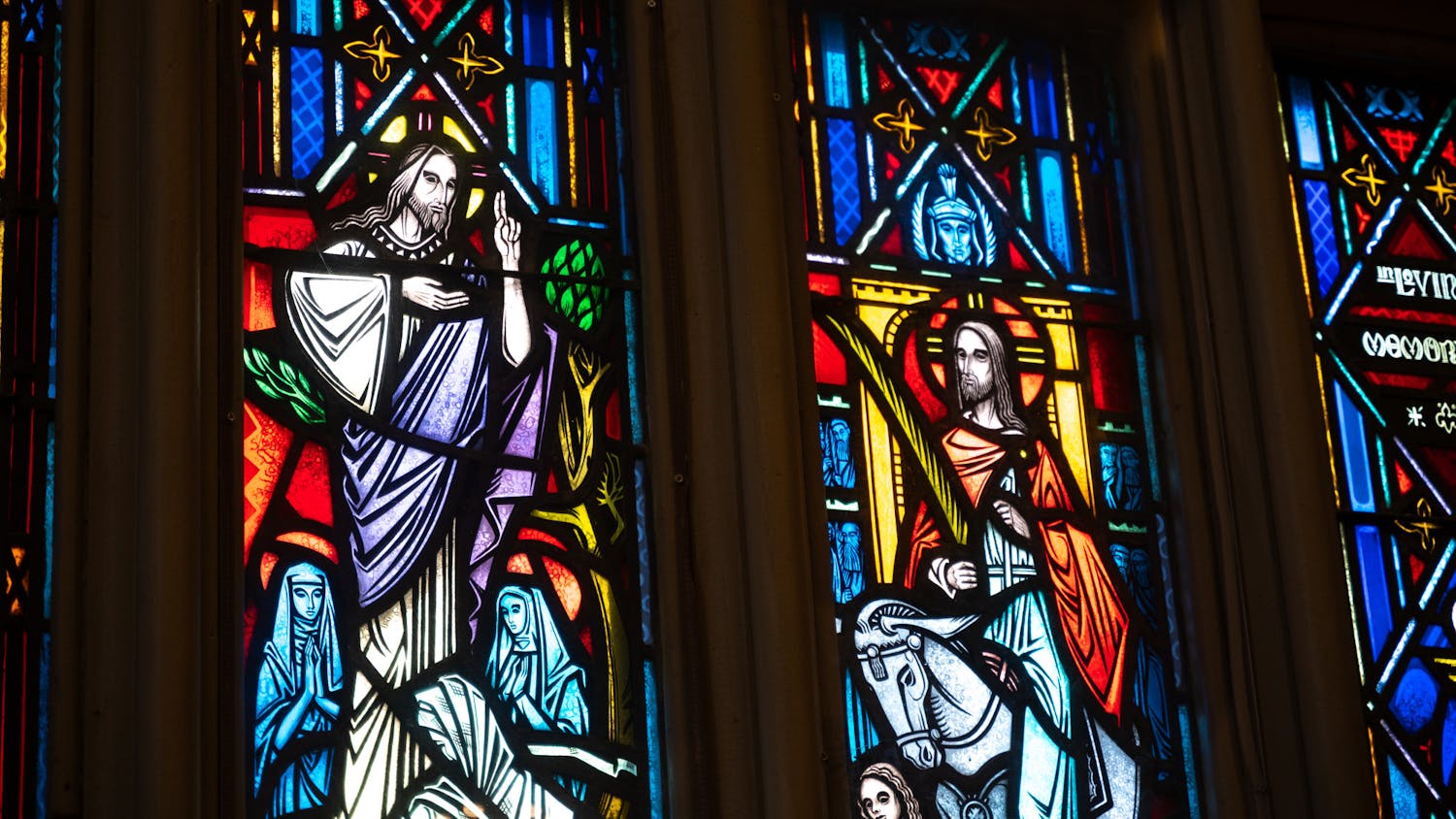Ho-Chunk and University of Wisconsin-Madison leaders dedicated a sculpture Friday honoring the life and legacy of late Ho-Chunk artist and professor emeritus Truman Lowe.
The aluminum sculpture, Effigy: Bird Form, was created in 1997 by Lowe and was previously a part of the yearlong exhibition of 20th c-century works at the White House Sculpture Garden in Washington, D.C., according to a press release from the UW-Madison Division of Facilities Planning and Management. The sculpture was returned to UW-Madison earlier this year and currently rests north of Van Hise Hall.
“Being from the woodlands, I wanted my inspiration for this sculpture to come from a culture that inhabited this area and left its mark with earthen mounds — a unique way of showing respect and living with the Earth,” Lowe previously said of the sculpture.
"This is my attempt to pay my respects, to celebrate the longevity of our history and our traditions. We have endured and I know we will survive,” he added.
Lowe grew up in a Ho-Chunk community in Wisconsin and earned a degree in art education from UW-La Crosse before receiving a Master of Arts degree from UW-Madison. Lowe would shortly thereafter join the art department of UW-Madison’s School of Education.
The ceremony was held on Treaty Day — the day when, in 1832, the Ho-Chunk nation was coerced to cede Teejop, or the lands in present-day Madison. What followed was decades of attempted ethnic cleansing by means of violence.
UW-Madison was built on this ancestral Ho-Chunk land, which UW-Madison Chancellor Jennifer Mnookin acknowledged in her remarks at the event. The university’s construction destroyed much of the sacred burial mounds that occupied the land. Only a few remain today.
Truman Lowe’s daughter, Tonia, attended and spoke at the dedication ceremony.
“I think [one of the reasons] he felt so much like home to him was because of his strong connection to the land,” she said. “When we were growing up as kids, he would take us to visit the mounds on campus or to the springs that flowed into Lake Wingra. We’d just go and look at our reflections in Lake Mendota, look at the trees and the rocks.”
“When he walked around campus, he saw Ho-Chunk land,” she added. “He saw the campus and all the different layers of culture backwards and forwards in time and it was like this connection to the land gave him the ability to see not just the past, the present and the future, but all of it, all at once.”
Sarah Lemieux, the Ho-Chunk Nation District Three area representative, was one of several Ho-Chunk Nation members and leaders who attended the event.
“Truman Lowe’s work is a testament of the resilience and talent within our communities,” Lemieux said. “His contemporary art, deeply rooted in cultural heritage, not only honors our tradition but also challenges conventional artists.”
Lowe would go on to create internationally recognized artwork throughout his career. His work has been exhibited in Canada, Europe, Africa, South America and New Zealand, according to UW-Madison.
Lowe’s work continues to live on in many locations and museums after his passing at the age of 75 in 2019, and a few of his pieces remain as a part of the collection at the Madison Museum of Contemporary Art.
Patricia Marroquin Norby, associate curator of Native American art at the Metropolitan Museum of Art in New York, spoke of her memories of being a student under Lowe at UW-Madison.
“Truman’s art is deeply personal and grounded by his love for his family and community as well as his love for the land, water and skies of his ancestral homelands, which surround us today,” Norby said.
“A true teacher is one that you never stop learning from because they instill in you an openness for ideas and creativity, a sense of curiosity for the world around you and the ability to tap into your own imagination, your own expression, your own magic,” Norby added. “From Truman, I’m still learning.”
Lowe also contributed greatly to the University of Wisconsin-Madison, serving as coordinator for the then-recently founded Native American Studies Program for over a decade. He then served as the chair of Chancellor’s Scholarship Committee for over two decades, supporting university access to underrepresented minorities.
UW-Madison Chancellor Jennifer Mnookin was also part of the dedication ceremony and honored Truman Lowe’s legacy at the institution.
“Hundreds of people will pass by here every day, and they will see the sculpture,” Mnookin said. “They will see it as a powerful symbol, as a beautiful object and as an invitation to learn more about the indigenous history of this land.”
“It’s also, of course, a way to remember a tremendously gifted faculty member here at UW, who spent more than 30 years in our art department,” she added.
Mnookin also announced that a tuition waiver program for Wisconsin students of Native American tribes is in the works during Friday’s event.
Truman Lowe received both the Wisconsin Visual Art Lifetime Achievement Award and the Distinguished Alumni Award from the Wisconsin Alumni Association. UW-La Crosse named their arts building the Truman T. Lowe Center in his honor in 2022.
Ian Wilder is a sports editor for The Daily Cardinal. He's covered the men’s hockey beat, and has written in-depth about state politics and features. Follow him on Twitter at @IanWWilder.






